When you think about conducting an online search, the first thing that comes to your mind is probably Google. When it comes to online shopping – it’s Amazon. When it comes to lead generation – it’s LeadQuizzes. What about requesting a cab online? This is where Uber comes in.
What is Uber?
Uber is a transportation network company provides an on-demand service to its users via a mobile app. In other words – Uber is the taxi of the 21st century. The company’s headquarters are located in San Francisco, California.
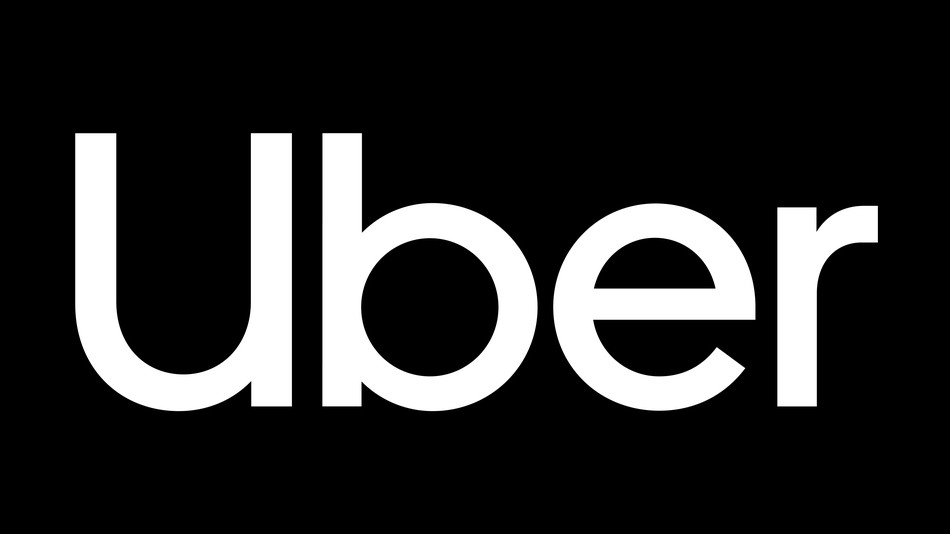
The very name of the company suggests something of supreme quality. Here is the dictionary entry of the prefix ‘uber’ (or ‘über’, as the Germans would originally spell it):
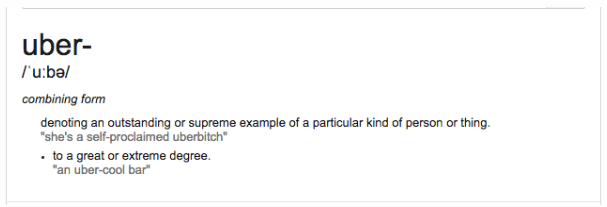
So, does it live up to what its name promises? And is there anything you can learn from the Uber business model and apply to your own?
A Brief History of Uber
The story of Uber started in 2008, after Travis Kalanick and Garrett Camp couldn’t get a ride in Paris. In March 2009, they launched UberCab, a mobile app that lets people get a cab with a single touch. In July 2009, they had the first Uber ride ever in San Francisco.
After some initial success, they shortened the name to Uber and the rest is history. Today, Uber is a brand 48.5 million users in the US relies upon when they need to get from point A to point B without driving on their own.
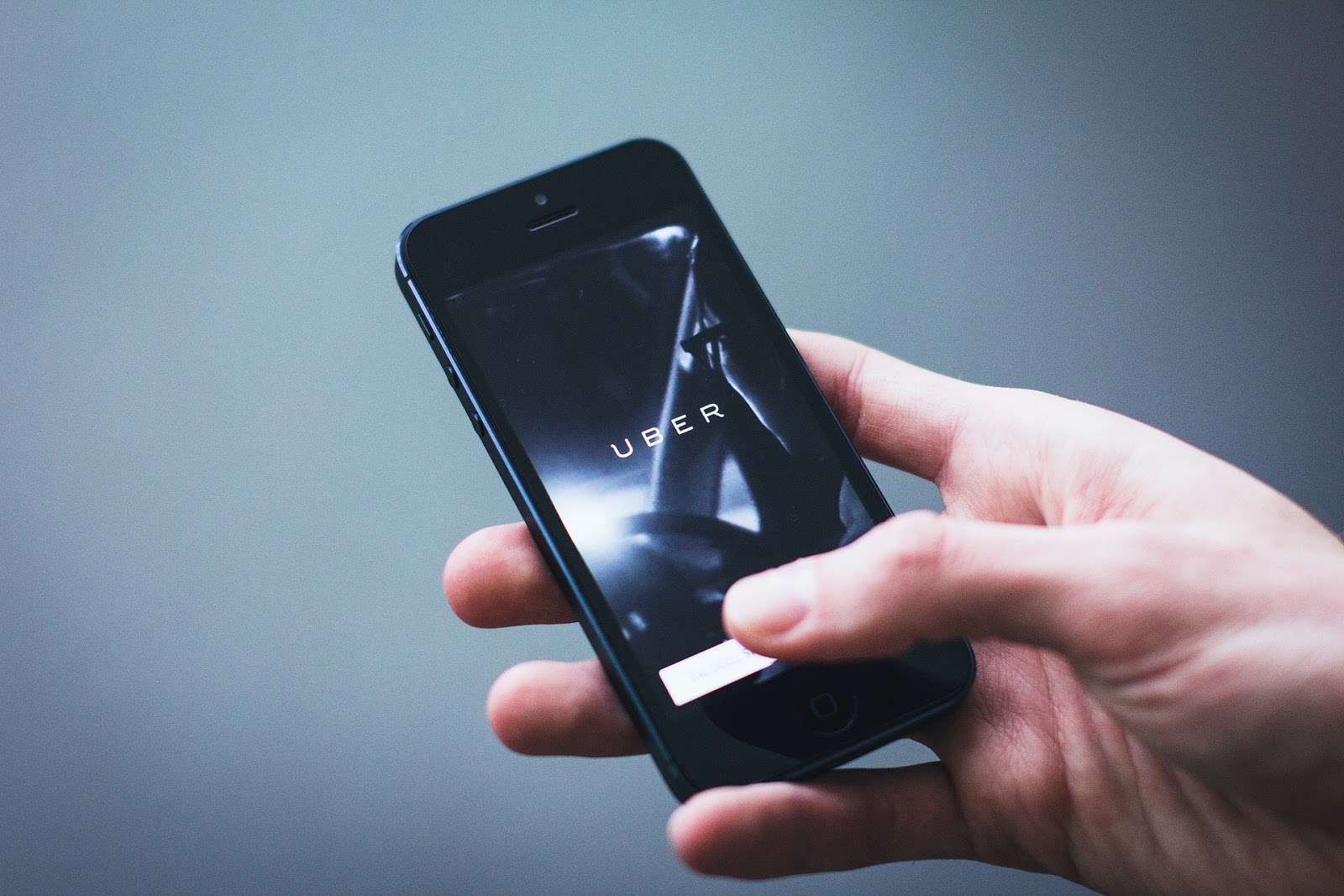
Uber’s old mission statement used to say
“Make transportation as reliable as running water, everywhere, for everyone,”
But, as a part of their recent rebranding efforts, the initial statement has been transformed into
“We ignite opportunity by setting the world in motion.”
According to Uber’s own website, it all started as a simple idea – “tap a button, get a ride”. Today, the company is valued at $72 billion and operates in 785 cities all over the world.
The 5-Step Process Behind the Uber Business Model
Step #1 – Cab request
Uber users use their smartphone app to request a cab and schedule the pickup.
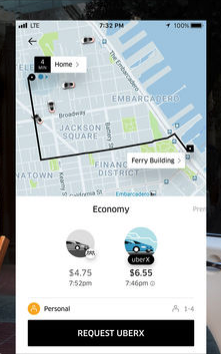
Step #2 – Driver matching
When a user places a request, the nearest cab driver gets an alert with the ride details. In case the nearest driver rejects the request, the ride details are forwarded to another driver in the vicinity.
Step #3 – Customer ride
The Uber app will show the ETA of the cab to the user. It also enables the user to track the cab. Once the passenger gets on the cab, the meter turns on to calculate the travel distance.
Step #4 – Payment
After the ride, a message showing the amount to pay pops out in the Uber app. The passenger pays either with cash or the app deduces the given amount from their prepaid wallet.
Step #5 – Driver rating
Once the ride is over, the passenger can rate the driver via the app. This component is crucial as it adds extra credibility to the Uber business model by letting the user know more about the driver before they book a ride.
Uber’s Value Proposition
As a multi-sided platform, Uber delivers value propositions to both passengers and drivers.
For the passengers this means:
- Being able to get a ride with one tap 24/7
- Fast pick-ups (usually 3-5 minutes)
- Lower prices than traditional taxi services
- The ability to track the driver arriving
- Get an estimated fare and duration
- The ability to leave feedback
- No need to communicate with the driver (just kidding)
For the drivers, on the other hand, Uber means:
- The opportunity to earn (for everyone with a driver’s license and a car)
- Freedom to choose their own work hours
- Getting started easily (still requires identification, background check, vehicle inspection, etc.)
- No boss
- No investment required (presuming they already own a car)
- A dedicated app that helps manage navigation and earnings
- The platform manages any damages made by the passenger (no need to argue with them)
- Insurance coverage
How Does Uber Make Money?
Commissions
Uber charges it driver-partners a 25% service fee on all fares (meaning that 75% goes to drivers). According to Uber, this fee covers the use of Uber software, the collection of fares, credit card commissions, and the distribution of invoices.
For now, there’s no fee for joining Uber as a driver.
In addition, the Uber business model is based on the price surge technology – when there’s higher demand for rides, the fares also automatically go up.
Such a business model has led Uber to generate a global net revenue of $7.5 billion in 2017 (as can be seen in the graph below) and a $2.5 billion profit in the first quarter of 2018.
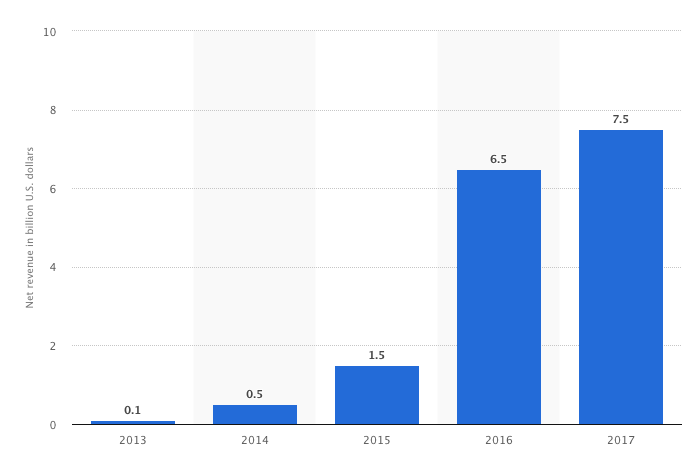
Promotional Partnerships
Another way Uber generates revenue is through promotional partnerships. Due to its huge base of users, Uber attracts big brands looking for partnerships as a part of their marketing efforts. IN the past, Uber has partnered with global brands such as Hilton, Pepsi, BMW, Spotify, Starwood, and others.
Such partnerships are usually a win-win situation for all the parties involved. Customers benefit from other brands’ campaigns (for example, Uber customers in certain cities were treated to free rides in the BMW 7 Series as a part of their new model’s promotional campaign). Uber generates additional revenue. Brands increase their audience’s awareness.
3 Lessons to Learn from the Uber Business Model
1. Segment your target audience
Uber does a great job at segmenting their target audience – not only when it comes to customers, but drivers as well.
For example, their own data shows that around a third of Uber driver-partners in London live in neighborhoods with high unemployment rates (greater than 10%). This is an excellent example of geo-demographic segmentation. Uber uses it to create a better image of their company, but they also use this valuable data for targeting potential drivers.
Another example of Uber’s segmentation can be seen in the Austin case study. Here, Uber tracked the trips by proximity to train stations and came to a conclusion that “nearly 60% of trips are one-way, meaning people are relying on Uber to connect them to other modes of transportation.”
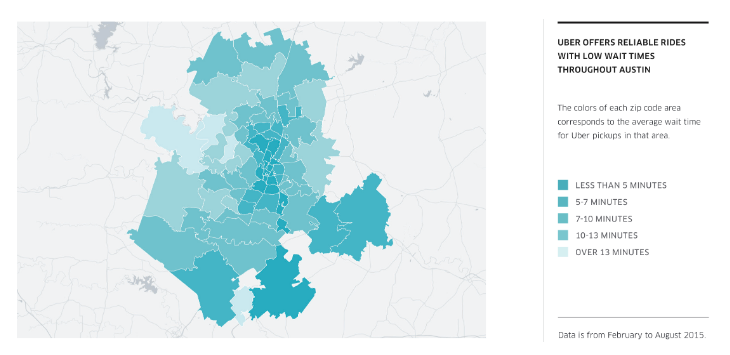
This is another piece of valuable data that can be used for situational and behavioral segmentation.
In modern marketing, segmentation is one of the integral components of the so-called STP marketing model. Market segmentation is defined as “the process of dividing a broad market, normally consisting of existing and potential customers, into subsets of consumers (known as segments), that exhibit some type of shared characteristics.”
One of the most popular, engaging, and fun ways of generating and segmenting leads are online quizzes. Once you create a quiz with a specific goal in your mind, you can use it to gather all the data you need about your customers without being too intrusive.
Rejuv Medical, a health clinic, used online quizzes to segment their potential patients and offer them exactly the services they need. The result? 15 new patients and $18,000 in revenue with only one quiz.

If you want to learn how to create your own quiz and use it to obtain valuable data about your potential customers, we’ve prepared this detailed quiz maker guide to help lead you through the entire process.
2. Cater to each individual’s specific needs
From UberX to UberLUX and UberSUV to UberBLACK, Uber customers are spoiled with options. Carefully segmenting their target audience enables Uber to cater to each individual’s specific needs.
The Uber business model caters to customers of all types and ages, but most of them fall into these three categories:
- People who don’t own a car or a driver’s license
- People who prefer not to drive
- Tourists
Still, micro-segmenting these categories even further has enabled Uber to expand their services to various additional levels and types. That being said, Uber has diversified their original taxi services to include:
- UberKIDS – cars are equipped with child safety seats
- UberPETS – pet transport
- UberWAV – wheelchair accessible vehicles
- UberMOTO – transportation by motorcycle
- UberBOAT – water-taxi service
- UberRUSH – package delivery service
- UberEATS – food delivery
And more.
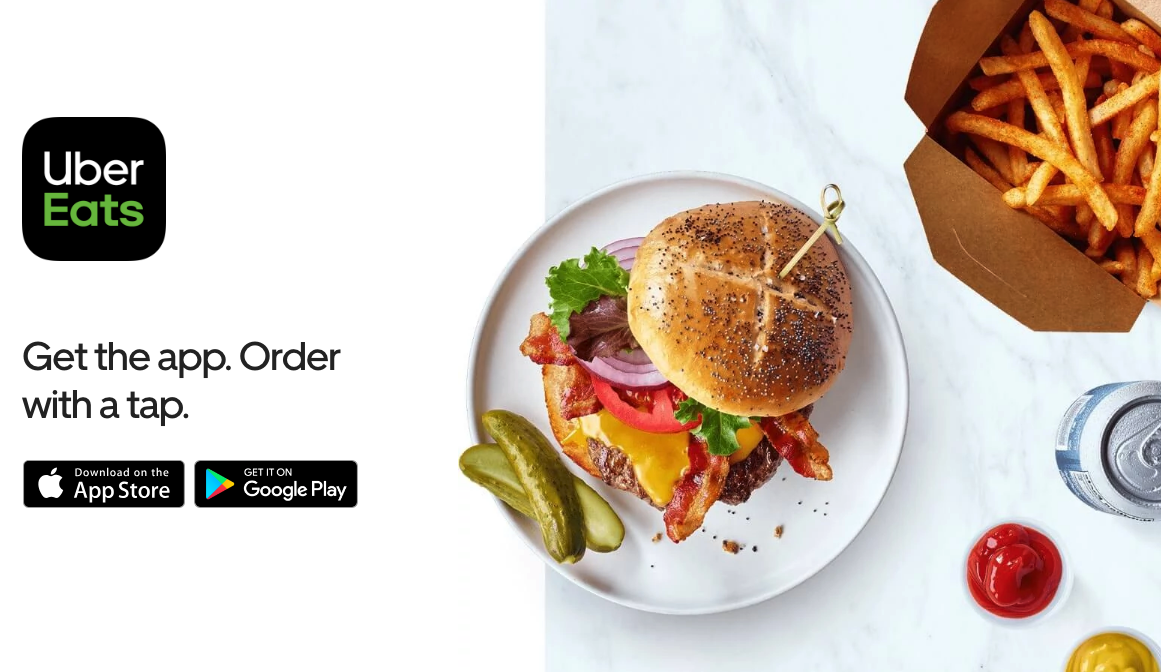
3. Don’t be afraid to be a disruptor
There’s this quote circulating social media in the past few years that best shows the way modern businesses operate. TechTarget’s Tom Goodwin made the following observation:
“Uber, the world’s largest taxi company, owns no vehicles.
Facebook, the most popular media owner, creates no content.
Alibaba, the most valuable retailer, has no inventory.
Airbnb, the largest accommodation provider, owns no real estate.”
Even though this isn’t entirely true (anymore) – as Uber does own vehicles Facebook does create content, and Airbnb does own real estate – still, it shows a discernable pattern in the way businesses operate nowadays.
According to Goodwin, only those companies that successfully master the software interfaces and manage to connect the goods and services with large audiences will make significant money in the new economy of the digital age.
The Uber business model is a typical disruptor business model. By taking over the digital customer interface, they caused the age-old taxi system to crumble.
If you’re looking for more examples of how big brands go about their business, in addition to the Uber business model, we have examined business models and marketing strategies of Netflix, Starbucks, Red Bull, Nike, Tesla, and Apple.